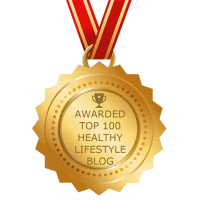Chest pain is a symptom that demands attention. While often associated with heart attacks, it can stem from a wide range of causes, many of which are directly linked to our daily habits. This article explores the profound connection between lifestyle factors and chest pain, offering a holistic roadmap to not only manage symptoms but also to build a foundation for long-term heart health. We’ll delve into the powerful roles of diet, exercise, and stress management, and, crucially, equip you with the knowledge to recognize when chest pain requires immediate medical attention.
The Lifestyle-Chest Pain Connection: Understanding the Root Causes
Many types of chest pain, particularly those related to the cardiovascular system, are a direct result of our lifestyle choices. The cumulative effects of a poor diet, lack of physical activity, and chronic stress can lead to conditions that manifest as chest pain.
Cardiovascular Causes
- Coronary Artery Disease (CAD): This is the most common cause of heart-related chest pain. CAD is a condition where the major blood vessels that supply the heart become damaged and narrowed. This is often due to the buildup of plaque (a substance made of cholesterol, fats, and other substances) in the arteries, a process called atherosclerosis. The plaque buildup reduces blood flow to the heart muscle, leading to a type of chest pain known as angina. Angina feels like a squeezing, pressure, or heaviness in the chest. It’s often triggered by physical exertion or emotional stress and subsides with rest.
- Heart Attack (Myocardial Infarction): A heart attack occurs when a blood clot completely blocks an artery, cutting off blood flow to a section of the heart muscle. This causes the heart muscle to die. The chest pain associated with a heart attack is typically more severe, lasting longer than angina, and may be accompanied by shortness of breath, cold sweats, and pain radiating to the arm, neck, jaw, or back.
- Pericarditis: This is the inflammation of the pericardium, the two thin layers of sac-like tissue that surround the heart. Pericarditis can be caused by infections, injuries, or autoimmune diseases. The chest pain from pericarditis is often sharp, and stabbing, and may worsen when you lie down or cough.
Non-Cardiovascular Causes
It’s important to remember that not all chest pain is heart-related. Many other conditions, some of which are also influenced by lifestyle, can cause it.
- Gastrointestinal Issues:
- Acid Reflux (GERD): The backward flow of stomach acid into the esophagus can cause a burning sensation in the chest, often mistaken for a heart attack. This is particularly common after large, fatty meals.
- Esophageal Spasms: These are abnormal contractions of the muscles in the esophagus, which can feel like a sudden, severe chest pain.
- Musculoskeletal Issues:
- Muscle Strain: Straining the muscles in the chest wall from heavy lifting or exercise can lead to localized, sharp chest pain.
- Costochondritis: This is the inflammation of the cartilage that connects a rib to the breastbone. It causes sharp pain that can be exacerbated by pressure or movement.
- Anxiety and Panic Attacks: A panic attack can mimic a heart attack with symptoms like crushing chest pain, rapid heart rate, and shortness of breath. These episodes are often triggered by stress.
The Holistic Approach: Your Action Plan for Relief
Managing chest pain and promoting heart health is a multi-faceted endeavor. It requires a holistic approach that integrates diet, exercise, and stress management into your daily routine.
The Heart-Healthy Diet: Fueling Your Body Right
What you eat directly impacts the health of your arteries and the overall function of your heart. A heart-healthy diet is not about deprivation; it’s about making smart, sustainable choices that nourish your body.
What to Embrace:
- Fruits and Vegetables: These are packed with vitamins, minerals, and antioxidants that help protect your arteries from damage. They are also rich in fiber, which helps lower cholesterol levels. Aim for a variety of colors to get a broad spectrum of nutrients.
- Whole Grains: Opt for foods like oats, brown rice, quinoa, and whole wheat bread. Whole grains contain fiber that helps lower LDL (“bad”) cholesterol and can help regulate blood pressure.
- Lean Proteins: Choose skinless poultry, fish, and legumes. Fatty fish like salmon, mackerel, and sardines are particularly beneficial as they are rich in omega-3 fatty acids, which reduce inflammation and lower triglyceride levels.
- Healthy Fats: Incorporate monounsaturated and polyunsaturated fats found in avocados, nuts, seeds, and olive oil. These fats can help improve cholesterol levels and reduce the risk of heart disease.
What to Limit or Avoid:
- Saturated and Trans Fats: These fats, found in red meat, full-fat dairy, and processed foods, raise LDL cholesterol and contribute to plaque buildup in arteries.
- Sodium: High sodium intake can lead to high blood pressure, a major risk factor for heart disease. Read food labels and choose low-sodium options.
- Added Sugars: Sugary drinks and processed sweets can contribute to weight gain, inflammation, and insulin resistance, all of which harm heart health.
Pro-Tip: The DASH (Dietary Approaches to Stop Hypertension) diet and the Mediterranean diet are excellent, evidence-based dietary patterns that promote heart health and can significantly reduce the risk of heart-related chest pain.
Regular Exercise: Moving for a Healthier Heart
Physical activity is a cornerstone of cardiovascular health. It strengthens the heart muscle, improves circulation, and helps manage weight, all of which reduce the risk of chest pain.
How Exercise Helps:
- Strengthens the Heart: Your heart is a muscle, and like any other muscle, it gets stronger with exercise. A stronger heart can pump more blood with less effort, reducing strain on the arteries.
- Improves Cholesterol Levels: Regular exercise can increase HDL (“good”) cholesterol and lower triglycerides.
- Lowers Blood Pressure: Exercise helps make your arteries more elastic and can lead to a sustained drop in blood pressure.
- Weight Management: Maintaining a healthy weight reduces the strain on your heart and lowers the risk of conditions like diabetes and high blood pressure.
Types of Exercise to Incorporate:
- Aerobic Exercise (Cardio): This is any activity that gets your heart rate up. Examples include brisk walking, jogging, cycling, swimming, and dancing. Aim for at least 150 minutes of moderate-intensity aerobic activity per week.
- Strength Training: Building muscle mass through activities like lifting weights or using resistance bands can improve overall metabolism and help with weight management. Aim for two sessions per week.
- Flexibility and Balance: Stretching and activities like yoga and tai chi can improve flexibility and reduce stress.
Important Note: If you have an existing heart condition or have experienced chest pain, consult your doctor before starting any new exercise program. They can help you develop a safe and effective plan.
Stress Management: Calming Your Mind, Protecting Your Heart
Chronic stress is a silent killer. It triggers a cascade of physiological responses, including the release of stress hormones like cortisol, which can raise blood pressure, increase heart rate, and contribute to inflammation and plaque buildup in arteries.
Effective Stress-Reduction Techniques:
- Mindfulness and Meditation: Practicing mindfulness can help you become more aware of your body’s response to stress. Just a few minutes of daily meditation can help calm your nervous system.
- Breathing Exercises: Deep, diaphragmatic breathing can immediately lower your heart rate and blood pressure, providing a quick way to manage stress in the moment.
- Yoga: This practice combines physical postures, breathing exercises, and meditation, offering a comprehensive way to reduce stress and improve both physical and mental well-being.
- Hobbies and Social Connections: Engaging in activities you enjoy and spending time with loved ones can significantly reduce stress levels.
- Adequate Sleep: Aim for 7-9 hours of quality sleep per night. Sleep is the body’s time to repair and rejuvenate, and lack of sleep can increase stress and inflammation.
Pro-Tip: Consider talking to a therapist or counselor. They can provide tools and strategies to help you manage chronic stress and its effects on your health.
When to Seek Immediate Medical Attention: Don’t Wait!
While lifestyle changes are crucial for long-term health, some types of chest pain are a medical emergency. Knowing the difference can save your life.
Call emergency services immediately if your chest pain is:
- Sudden and Severe: Especially if it feels like crushing, squeezing, or pressure.
- Accompanied by Other Symptoms: Such as shortness of breath, cold sweats, dizziness, nausea, or pain that radiates to your arm, neck, jaw, or back.
- Doesn’t Go Away with Rest or Medication: If you have been prescribed nitroglycerin for angina and it doesn’t relieve the pain, seek help immediately.
- Lasts for More Than a Few Minutes: Or comes and goes for a prolonged period.
Never ignore chest pain, especially if it feels different from any previous episodes or if you have risk factors for heart disease (e.g., family history, high blood pressure, high cholesterol, diabetes, smoking). Time is of the essence during a heart attack; the quicker you receive treatment, the less damage is done to your heart.
Conclusion: Your Journey to a Healthier Heart
Chest pain is a wake-up call. It’s your body’s way of telling you to re-evaluate your habits. By adopting a holistic approach that prioritizes a heart-healthy diet, regular physical activity, and effective stress management, you can not only reduce the frequency and severity of chest pain but also significantly lower your risk for serious cardiovascular diseases.
This journey is about empowering yourself with knowledge and taking control of your health. Remember, every small, positive change you make contributes to a stronger, healthier heart. Listen to your body, make informed choices, and never hesitate to seek professional medical advice. Your heart is the most vital organ; treat it with the care it deserves.





